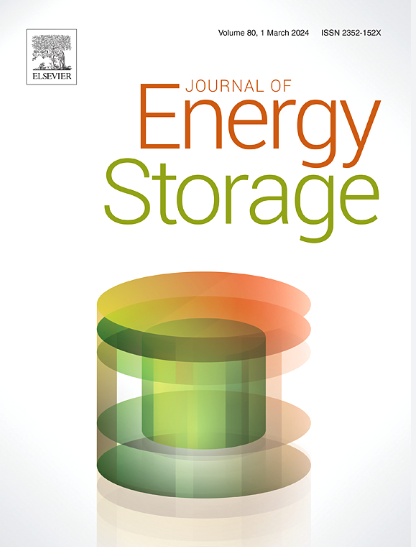Organic and polymeric cathode materials for metal-ion storage devices: challenges, recent advances, current status, and perspectives
IF 8.9
2区 工程技术
Q1 ENERGY & FUELS
引用次数: 0
Abstract
Metal-ion batteries generally consist of three main components including cathode, anode, and electrolyte, which determine performance of batteries. Cathodes are one of essential components of batteries that convert electrochemical energy stored in batteries into electrical energy by facilitating the transfer of ions through the electrolyte and the transfer of electrons through the external circuit. Cathodes play a crucial role in battery performance, influencing factors such as voltage, capacity, lifespan, and charging speed. In recent years, significant research has been conducted on cathodes for metal-ion batteries, especially inorganic cathode materials. However, the use of these cathodes has been limited due to their undesirable properties, such as limited cyclability and rapid capacity fade, high cost, and high toxicity. Currently, polymer organic cathode materials (POCMs) including conductive polymers (CPs), carbonyl polymers (COPs), sulfide polymers (SPs), radical polymers (RPs), and imine polymers (IPs), have garnered attention due to their high energy density, high capacity, environmental friendliness, high voltage, and adjustable frameworks. As we continue to explore and innovate, these polymer organic cathodes hold the promise of significantly enhancing the performance of metal-ion batteries. This review discusses the properties and challenges of polymer organic cathodes for metal-ion batteries and designing strategies to enhance their performance.
金属离子存储器件用有机和聚合物正极材料:挑战、最新进展、现状和展望
金属离子电池一般由阴极、阳极和电解液三大部分组成,它们决定了电池的性能。阴极是电池的重要组成部分之一,它通过促进离子通过电解质的转移和电子通过外部电路的转移,将储存在电池中的电化学能量转化为电能。阴极对电池的性能、电压、容量、寿命和充电速度等影响因素起着至关重要的作用。近年来,人们对金属离子电池的负极材料,特别是无机负极材料进行了大量的研究。然而,由于其不良性能,如有限的可循环性和快速的容量衰减,高成本和高毒性,这些阴极的使用受到限制。目前,包括导电聚合物(CPs)、羰基聚合物(cop)、硫化物聚合物(SPs)、自由基聚合物(rp)和亚胺聚合物(IPs)在内的聚合物有机正极材料(POCMs)因其高能量密度、高容量、环保、高电压和可调节框架而备受关注。随着我们的不断探索和创新,这些聚合物有机阴极有望显著提高金属离子电池的性能。本文综述了金属离子电池用聚合物有机阴极的性能、面临的挑战以及提高其性能的设计策略。
本文章由计算机程序翻译,如有差异,请以英文原文为准。
求助全文
约1分钟内获得全文
求助全文
来源期刊

Journal of energy storage
Energy-Renewable Energy, Sustainability and the Environment
CiteScore
11.80
自引率
24.50%
发文量
2262
审稿时长
69 days
期刊介绍:
Journal of energy storage focusses on all aspects of energy storage, in particular systems integration, electric grid integration, modelling and analysis, novel energy storage technologies, sizing and management strategies, business models for operation of storage systems and energy storage developments worldwide.
 求助内容:
求助内容: 应助结果提醒方式:
应助结果提醒方式:


